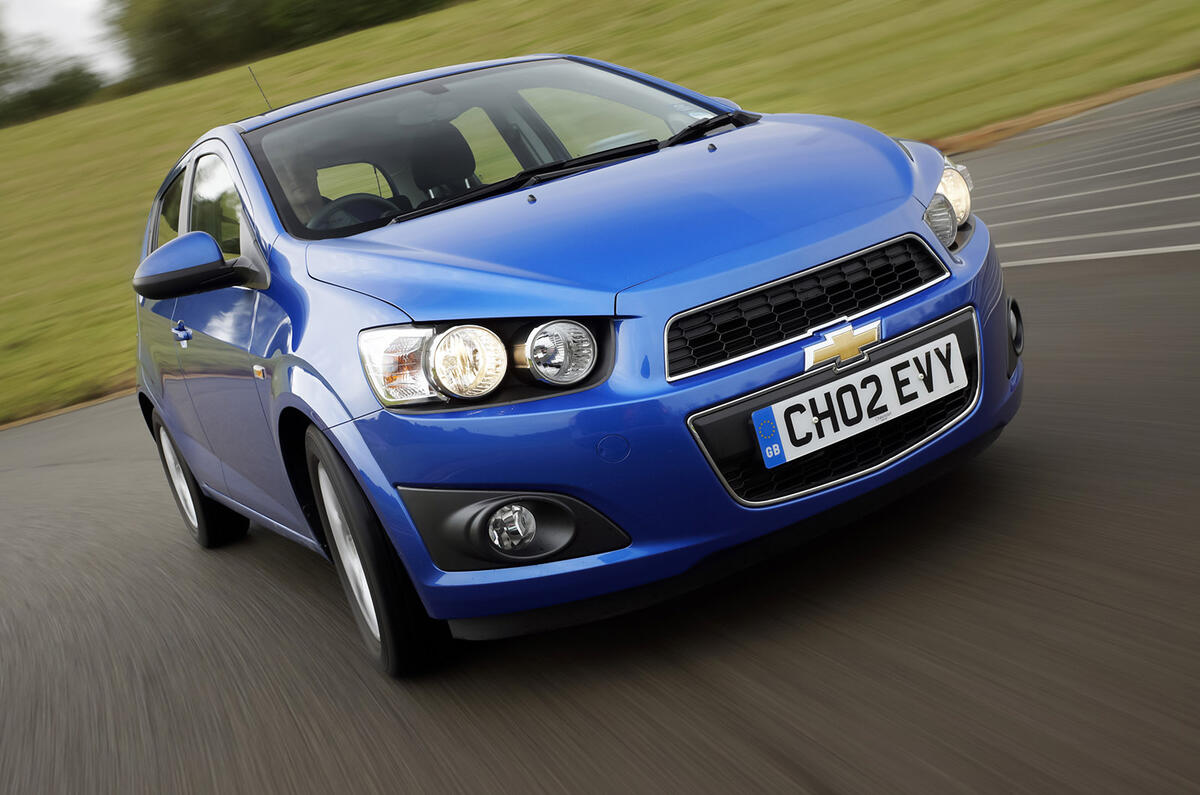What is it?
Chevrolet’s all-new Aveo is its latest entry to the ever evolving B segment. It’s set to undercut the cheap and cheerful Hyundai i20, while packing an impressive amount of standard kit.
It’s also the fourth all-new model to be produced for Chevrolet UK by the newly renamed GM Korea, finally free from the shackles of Daewoo nomenclature.
Chevy’s aim is to differentiate its cars from sister Vauxhall without being forced downmarket, so the Aveo mustn’t be a Corsa by another name on the cheap.
In fact, it uses GM’s Gamma II platform that will underpin the next Corsa, and the 1.2-litre engine tested here is an evolution of its sister car’s powerplant, with a lighter cylinder block and improved cooling.
What’s it like?
On winding roads, the Aveo is certainly no Fiesta chaser. Rather, its strength lies in refinement. The irregularities we could find on Swiss roads yielded a satisfyingly distant bump, but little more, although British roads might erode that talent.
The hydraulic steering brings reasonable feel, weight and feedback, but might be on the heavy side for some during car park shimmies. Vocal (but not coarse) at high revs, the 1.2 petrol engine isn’t embarrassed here, and doesn’t intrude at motorway speeds in fifth. Gear changes are pleasant when not rushed, and brakes are effective following a little dead travel.
Bold styling dominates the Aveo’s look, inside and out. It has a compact sturdiness not dissimilar to the VW Polo, albeit with rising lines on the flanks to add some dynamism. The split front grille clearly relates the car to stable mates such as the Spark and Cruze, but twin headlamps on each side lend the Aveo character of its own. Only the heavy-set rump and fiddly rear light clusters disrupt what is a generally composed look.
Like the Vauxhall Astra, the Aveo’s interior benefits from Insignia switchgear, combined with original touches, including a compact motorbike-style binnacle that houses an analogue tachometer and digital speedo. Its elaborate plastic housing might raise some eyebrows, but you can’t dispute the instrument clarity. Sturdy, textured surfaces dominate the dash, while much of the remaining interior plastic is on the scratchy side.
The seats are sculpted but soft, and leave the driver slightly perched. One six-footer behind another found their knees marginally pushing into those soft seats, but headroom was plentiful. Boot space satisfies the class average at 290 litres.
Standard equipment includes six airbags, cruise control, iPod connectivity and rear spoiler, and air-conditioning might even make the final spec list by the car’s September launch. Either way, it’s an impressive haul of gear.
Should I buy one?
The five-year warranty and healthy basic spec alone will tempt buyers with a £10k limit, but add the Aveo’s (mostly) compelling style and the impressive level of comfort it offers, and it’s a supermini that’s well worth considering.
A lack of driver involvement won’t worry the bulk of potential owners, but a nearly new Fiesta can offer much more excitement if you’re prepared to play second fiddle on the V5.



















Join the debate
Add your comment
Re: Chevrolet Aveo 1.2 LS
Absolutely for the Fiat Coupe model - and why not take that idea and use it on four door cars instead of this rather odd half measure we seem to be getting?
Re: Chevrolet Aveo 1.2 LS
Re: Chevrolet Aveo 1.2 LS
Why are so many manufacturers trying to pretend that four door cars have just two doors? Hiding the rear door handles, as Chevrolet have done here on the new Aveo and also on the most recent Spark, and also for example Seat on the Leon, Alfa initially on the 156 and latterly on the 149/Giulietta, simply doesn't work. On all those example, this design fad looks rather silly because the front handle is clearly too far forward to be a two door car and the shut line for the rear door is clear to all. The overall effect is to unbalance the lines of the car and indeed draw attention to the fact that it is in fact a four door pretending not to be one! This is a feature that for me spoils many an otherwise decent looking car. It is pretentious and pointless. The only car this has ever worked on, just, is the Honda Civic because the B post is sufficiently far back to make the car look, at a glance, like a two door. If manufacturers want to hide door handles, then hide them both - maybe a look at Skoda's recent design study in which the slim line body colour door handles were where they should be on a four door car but all but hidden to the casual onlooker. Anyway, a plea to manufacturers - please stop trying to hide the obvious!